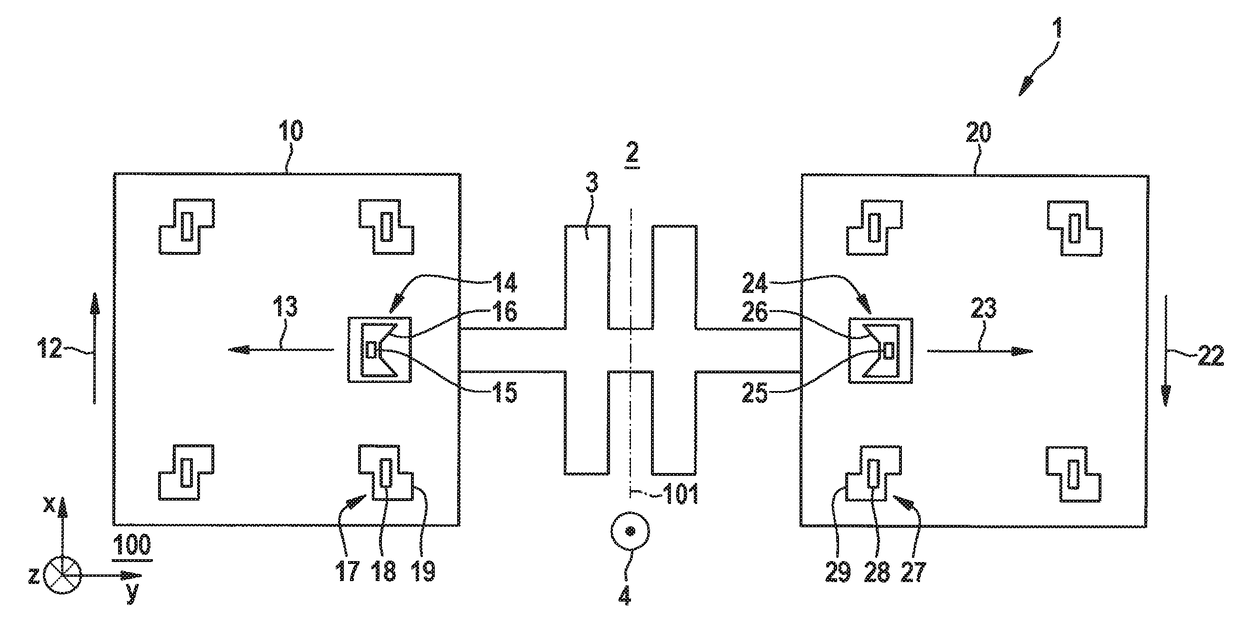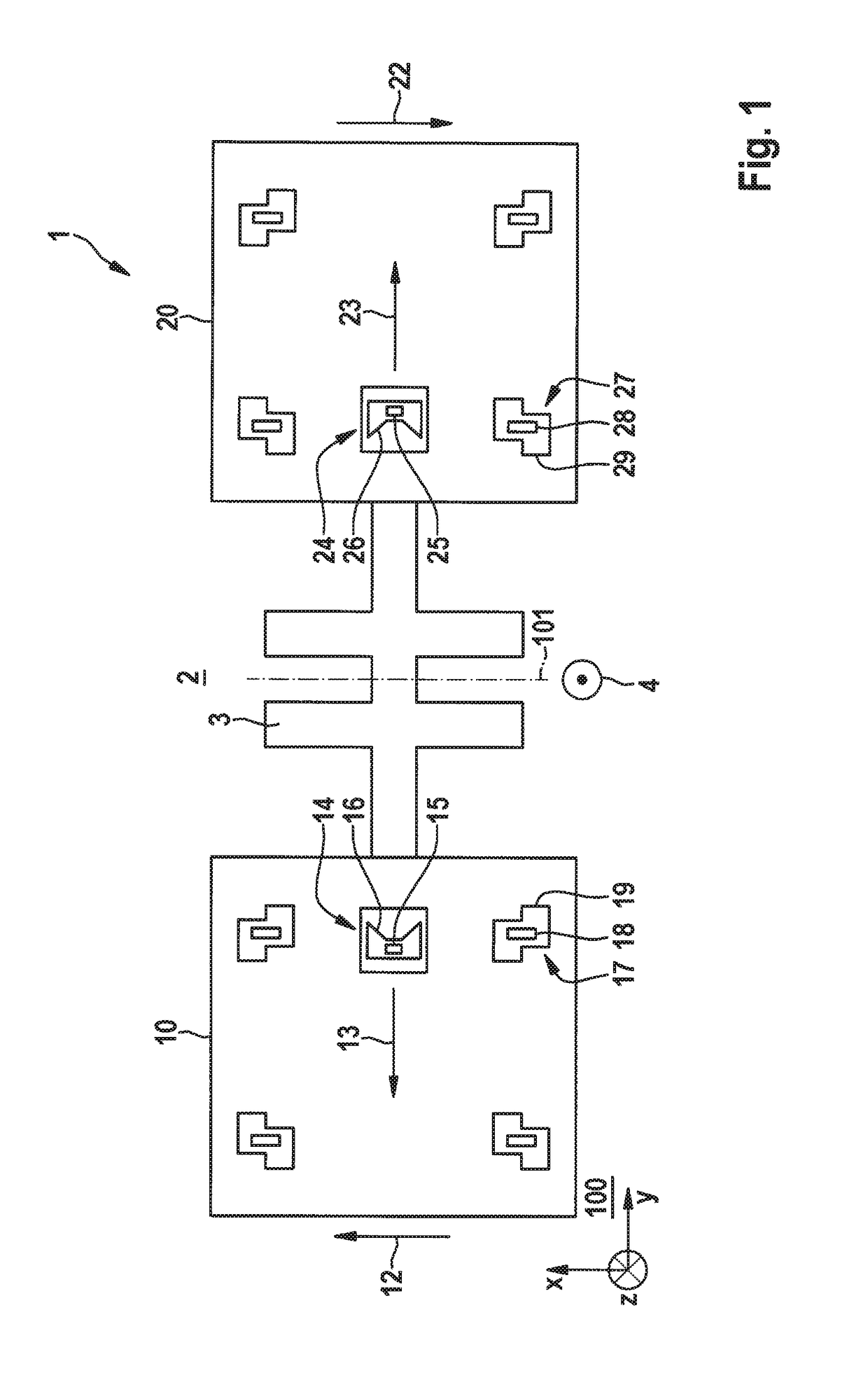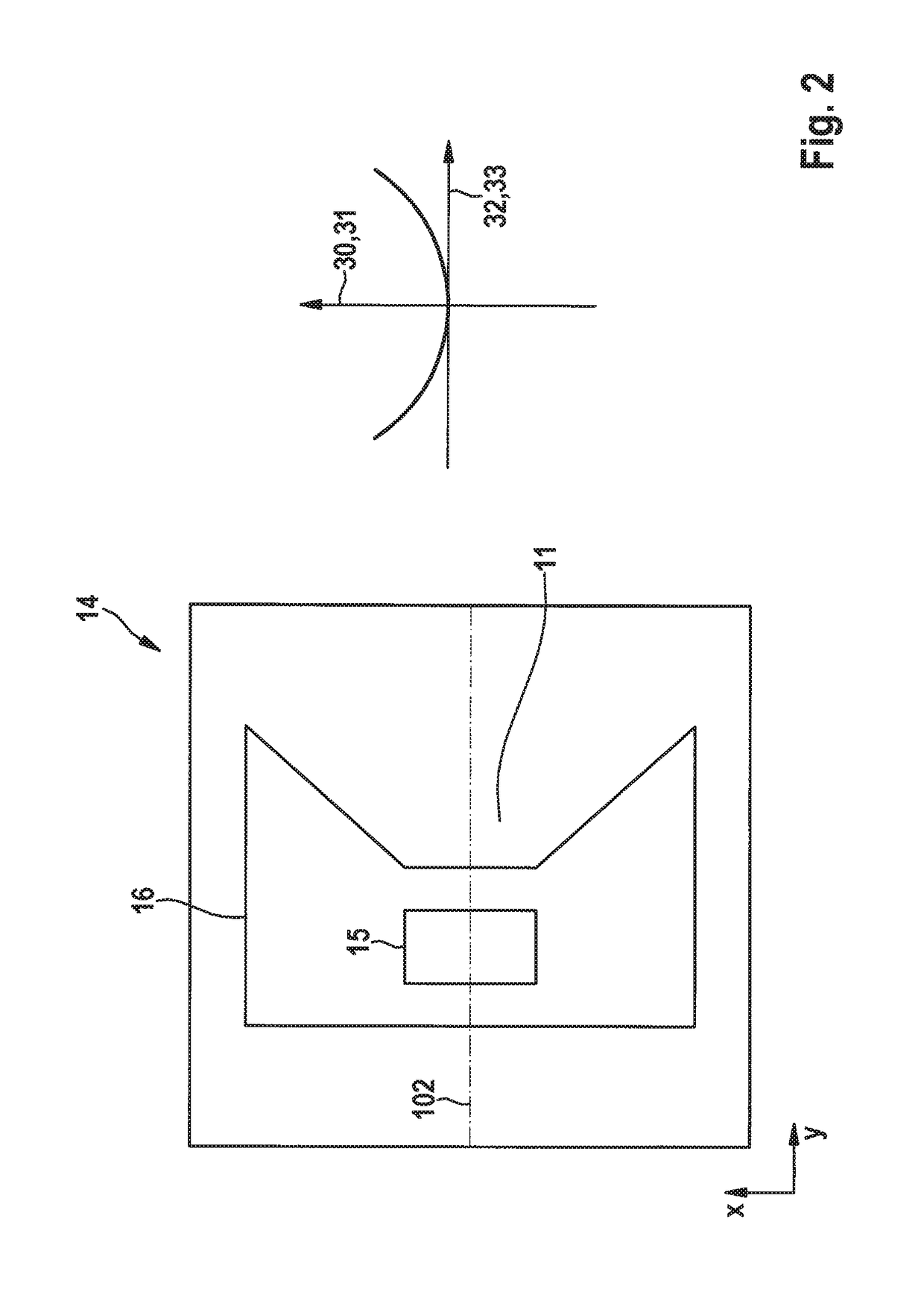Rotation rate sensor and method for operating a rotation rate sensor
a technology of rotation rate sensor and rotation rate, which is applied in the direction of speed measurement using gyroscopic effects, instruments, surveying and navigation, etc., can solve the problems of non-linear dependence and unknown, and achieve the effect of improving signal quality
- Summary
- Abstract
- Description
- Claims
- Application Information
AI Technical Summary
Benefits of technology
Problems solved by technology
Method used
Image
Examples
Embodiment Construction
[0018]FIG. 1 schematically shows a top view onto a rotation rate sensor 1 according to one exemplary specific embodiment of the present invention. Rotation rate sensor 1 includes a substrate 2 having a main extension plane 100, a Coriolis element 10, and a further Coriolis element 20. Coriolis element 10 is coupled via a spring element 3 to further Coriolis element 20. Moreover, Coriolis element 10 is excitable with the aid of an excitation arrangement, which is not shown, to carry out an excitation oscillation 12 along an excitation direction which extends along a first direction X in parallel to main extension plane 100. As a result, Coriolis element 10 experiences a deflection 33 in the excitation direction, as shown on the right side of FIG. 2. Further Coriolis element 20 is excitable with the aid of a further excitation arrangement, which is not shown, to carry out a further excitation oscillation 22 antiparallel to excitation oscillation 12.
[0019]In the case of a rotation rate...
PUM
 Login to View More
Login to View More Abstract
Description
Claims
Application Information
 Login to View More
Login to View More - R&D
- Intellectual Property
- Life Sciences
- Materials
- Tech Scout
- Unparalleled Data Quality
- Higher Quality Content
- 60% Fewer Hallucinations
Browse by: Latest US Patents, China's latest patents, Technical Efficacy Thesaurus, Application Domain, Technology Topic, Popular Technical Reports.
© 2025 PatSnap. All rights reserved.Legal|Privacy policy|Modern Slavery Act Transparency Statement|Sitemap|About US| Contact US: help@patsnap.com



